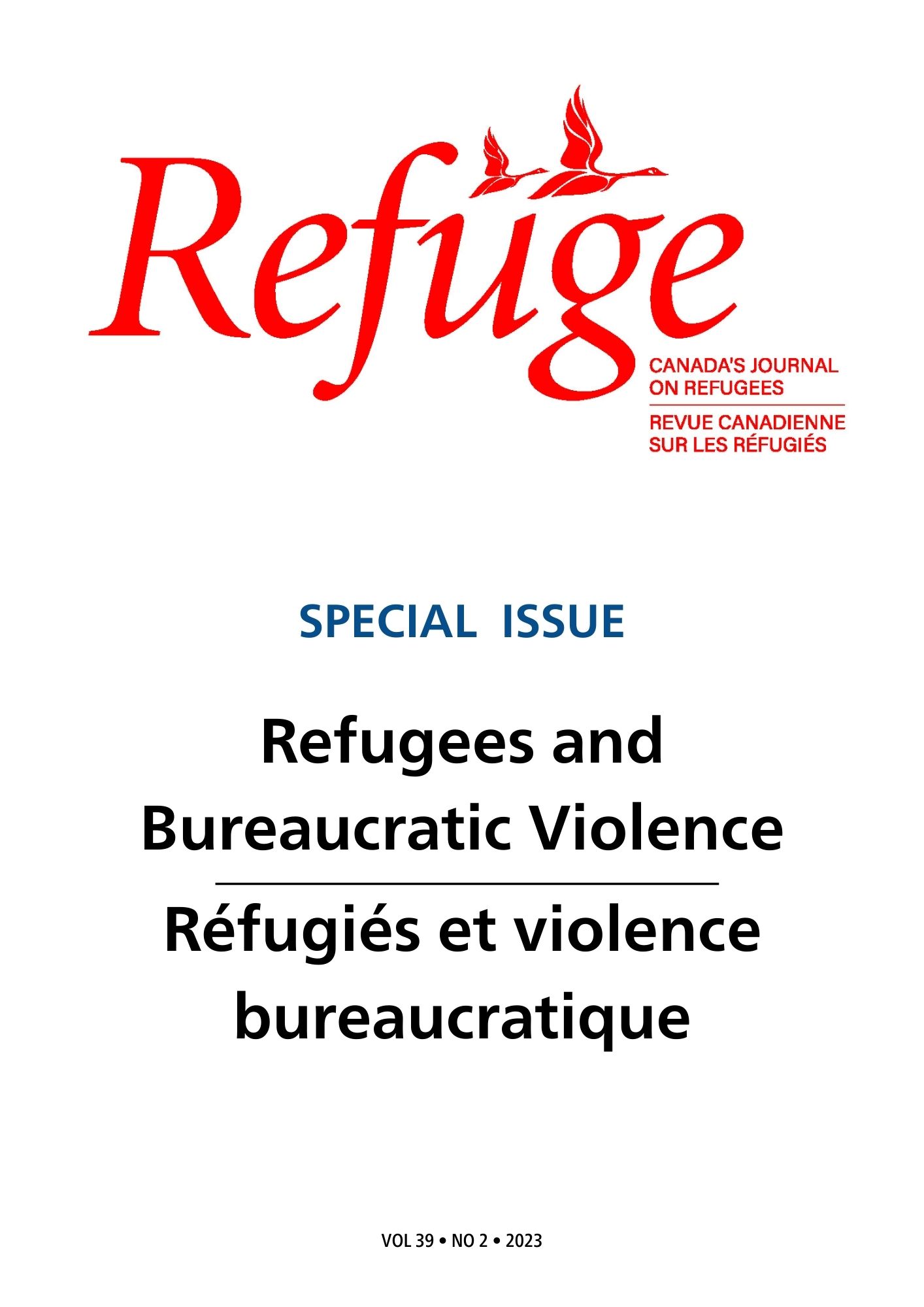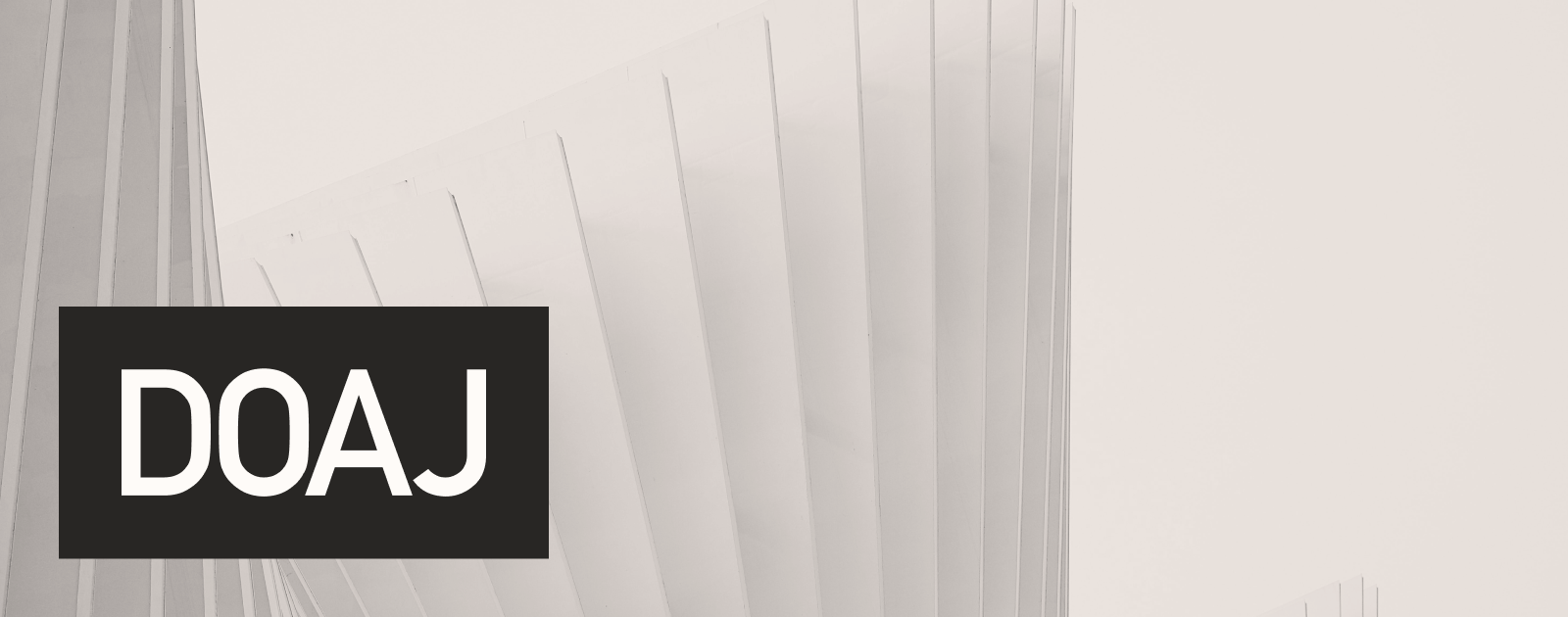Multiple Encounters: Queer Migrants and Bureaucratic Violence
DOI:
https://doi.org/10.25071/1920-7336.41072Keywords:
asylum, queer, migrants, violence, bureaucracyAbstract
In this paper, we analyze the multiple encounters queer asylum seekers face due to violence embedded in border control and asylum recognition processes. This analysis is based on the reconstitution of two narratives that form part of an ethnographic study, the result of five years of fieldwork with queer migrants in Brazil and Spain. We employ the notion of bureaucratic violence to understand the ambiguities between control and protection in the emergence of the LGBTI refugee as a subject of rights in the humanitarian realm.
Metrics
References
Abdelhady, D., Gren, N., & Joormann, M. (2020). Refugees and the violence of welfare bureaucracies in northern Europe. Manchester University Press. https://doi.org/10.7765/9781526146847
Arendt, H. (1969). On violence. Harcourt Brace Jovanovich.
Auyero, J. (2012). Patients of the state: The politics of waiting in Argentina. Duke University Press. https://doi.org/10.1215/9780822395287
Bhagat, A. H. (2020). Queer necropolitics of forced migration: Cyclical violence in the African context. Sexualities, 23(3), 361–375. https://doi.org/10.1177/1363460718797258
Bourdieu, P. (2000). Pascalian meditations. Stanford University Press.
Camminga, B. (2018). Transgender refugees and the imagined South Africa: Bodies over borders and borders over bodies. Springer Science+Business Media. https://doi.org/10.1007/978-3-319-92669-8
Casas-Cortes, M., Cobarrubias, S., De Genova, N., Garelli, G., Grappi, G., Heller, C., Hess, S., Kasparek, B., Mezzadra, S., Neilson, B., Peano, I., Pezzani, L., Pickles, J., Rahola, F., Riedner, L., Scheel, S., & Tazzioli, M. (2015). New keywords: Migration and borders. Cultural Studies, 29(1), 55–87. https://doi.org/10.1080/09502386.2014.891630
Cassidy, K., Yuval-Davis, N., & Wemyss, G. (2018). Intersectional border(ing)s. Political Geography, 66, 139–141. https://doi.org/10.1016/j.polgeo.2018.08.004
Chaney, P., Sabur, S., & Sahoo, S. (2020). Civil society organisations and LGBT+ rights in Bangladesh: A critical analysis. Journal of South Asian Development, 15(2), 184–208. https://doi.org/10.1177/0973174120950512
Conectas. (2014, December 18). Migrantes em Guarulhos. https://www.conectas.org/noticias/migrantes-em-guarulhos/
EL COLEF. (2018, December). La Caravana de Migrantes centroamericanos en Tijuana 2018: diagnóstico y propuestas de acción. El Colegio de la Frontera Norte. https://observatoriocolef.org/policybriefs/la-caravana-de-migrantes-centroamericanos-en-tijuana-2018-diagnostico-y-propuestas-de-accion/
Eldridge, E. R., & Reinke, A. J. (2018). Introduction. Conflict and Society, 4(1), 94–98. https://doi.org/10.3167/arcs.2018.040108
Facundo, A. (2017). Êxodos, refúgios e exílios: colombianos no sul e sudeste do Brasil. Papeis Selvagens.
Fanon, F. (2004). The wretched of the earth (R. Philcox, Trans.). Grove Press.
Fanon, F. (2008). Black skin, white masks. Grove Press.
Fassin, D. (2012). Humanitarian reason: A moral history of the present. University of California Press. https://doi.org/10.1525/9780520950481
Fassin, E., & Salcedo, M. (2015). Becoming gay? Immigration policies and the truth of sexual identity. Archives of Sexual Behavior, 44(5), 1117–1125. https://doi.org/10.1007/s10508-015-0551-z
França, I. L. (2023). The integration of LGBTI refugees in Brazil: Sexual democracies in the South, processes of racialization and shared precarities. Journal of Immigrant & Refugee Studies, 21(2), 146–157. https://doi.org/10.1080/15562948.2022.2132342
França, I. L., & Fontgaland, A. (2020). Gênero, sexualidades e deslocamentos: Notas etnográficas sobre imigrantes e “refugiados LGBTI” no Norte do Brasil. REMHU: Revista Interdisciplinar Da Mobilidade Humana, 28(59), 49–68. https://doi.org/10.1590/1980-85852503880005904
Giametta, C. (2019). The sexual politics of asylum: Sexual orientation and gender identity in the UK asylum system. Routledge. https://doi.org/10.4324/9781315561189
Gómez Arévalo, A. P. (2017). Entre la espada y la pared: Movilidad forzada de personas salvadoreñas LGBT. Mediações—Revista de Ciências Sociais, 22(1), 130–155. https://doi.org/10.5433/2176-6665.2017v22n1p130
GOV.UK. (2023, September). Country policy and information note: Sexual orientation and gender identity, Bangladesh, September 2023. https://www.gov.uk/government/publications/bangladesh-country-policy-and-information-notes/country-policy-and-information-note-sexual-orientation-and-gender-identity-bangladesh-september-2023-accessible
Graeber, D. (2016). The utopia of rules: On technology, stupidity, and the secret joys of bureaucracy. Melville House Publishing.
Gupta, A. (2012). Red tape: Bureaucracy, structural violence, and poverty in India. Duke University Press. https://doi.org/10.1215/9780822394709
Hodge, E. (2019). Making precarious: The construction of precarity in refugee and migrant discourse. Borders in Globalization Review, 1(1), 83–90. https://doi.org/10.18357/bigr11201919265
Huerta, A. V. (2016). Luchas migrantes en contextos de tránsito migratorio, el caso del movimiento migrante centroamericano. REMHU: Revista Interdisciplinar da Mobilidade Humana, 24(48), 31–44. https://doi.org/10.1590/1980-85852503880004803
Human Rights Watch. (2020, October 7). “Every day I live in fear”: Violence and discrimination against LGBT people in El Salvador, Guatemala, and Honduras, and obstacles to asylum in the United States. https://www.hrw.org/report/2020/10/07/every-day-i-live-fear/violence-and-discrimination-against-lgbt-people-el-salvador#6711
Kobelinsky, C. (2015). Judging intimacies at the French court of asylum. PoLAR: Political and Legal Anthropology Review, 38(2), 338–355. https://doi.org/10.1111/plar.12114
Lewis, R. A. (2014). “Gay? Prove it”: The politics of queer anti-deportation activism. Sexualities, 17(8), 958–975. https://doi.org/10.1177/1363460714552253
Luibhéid, E. (2020). “Treated neither with respect nor with dignity”: Contextualizing queer and trans migrant “illegalization,” detention, and deportation. In E. Luibhéid & K. R. Chávez (Eds.), Queer and trans migrations: Dynamics of illegalization, detention, and deportation (pp. 19–40). University of Illinois Press. https://doi.org/10.5406/j.ctv180h78v
Luibhéid, E., & Chávez, K. R. (Eds.). (2020). Queer and trans migrations: Dynamics of illegalization, detention, and deportation. University of Illinois Press. https://doi.org/10.5406/j.ctv180h78v
Makbul, N. (2023). An autoethnography of a South Asian (Muslim) queer scholar of color in American higher education. Theory, Research, and Action in Urban Education, 8(1). https://traue.commons.gc.cuny.edu/intersectionality-of-my-identities-and-life-experiences-provide-me-with-distinct-perspectives-an-autoethnography-of-a-south-asian-muslim-queer-scholar-of-color-in-american-higher-education/
Malkki, L. H. (1995). Refugees and exile: From “refugee studies” to the national order of things. Annual Review of Anthropology, 24(1), 495–523. https://doi.org/10.1146/annurev.an.24.100195.002431
Mason, T. D. (1999). The civil war in El Salvador: A retrospective analysis. Latin American Research Review, 34(3), 179–196. https://doi.org/10.1017/S002387910003942X
McNeal, K. E. (2019). Confessions of an ambivalent country expert: Queer refugeeism in the UK and the political economy of (im)mobility in and out of Trinidad and Tobago. Anthropological Theory, 19(1), 191–215. https://doi.org/10.1177/1463499618812600
Menetrier, A. (2023). An ethical dilemma: When research becomes “expert testimony.” In B. Camminga & J. Marnell (Eds.), Queer and trans African mobilities: Migration, asylum and diaspora (pp. 79–96). Zed Books.
Murray, D. A. B. (2016). Real queer? Sexual orientation and gender identity refugees in the Canadian refugee apparatus. Rowman & Littlefield International.
Saleh, F. (2020). Queer/humanitarian visibility: The emergence of the figure of The Suffering Syrian Gay Refugee. Middle East Critique, 29(1), 47–67. https://doi.org/10.1080/19436149.2020.1704501
Seitz, D. K. (2017). Limbo life in Canada’s waiting room: Asylum-seeker as queer subject. Environment and Planning D: Society and Space, 35(3), 438–456. https://doi.org/10.1177/0263775816667074
Shakhsari, S. (2014). The queer time of death: Temporality, geopolitics, and refugee rights. Sexualities, 17(8), 998–1015. https://doi.org/10.1177/1363460714552261
Taussig, M. T. (2004). Shamanism, colonialism, and the wild man: A study in terror and healing. University of Chicago Press.
Tazzioli, M. (2018). The temporal borders of asylum. Temporality of control in the EU border regime. Political Geography, 64, 13–22. https://doi.org/10.1016/j.polgeo.2018.02.002
Ticktin, M. (2006). Where ethics and politics meet. American Ethnologist, 33(1), 33–49. https://doi.org/10.1525/ae.2006.33.1.33
Torres, R. M. (2018). A crisis of rights and responsibility: Feminist geopolitical perspectives on Latin American refugees and migrants. Gender, Place & Culture, 25(1), 13–36. https://doi.org/10.1080/0966369X.2017.1414036
Torre-Cantalapiedra, E., & Yee-Quintero, J. C. (2018). Mexico, a vertical border? Policies to control irregular migration and its results, 2007–2016. LiminaR, 16(2), 87–104. http://www.scielo.org.mx/scielo.php?script=sci_arttext&pid=S1665-80272018000200087&lng=es&tlng=
UNHCR. (2012). UNHCR guidelines on international protection no. 9: Claims to refugee status based on sexual orientation and/or gender identity. https://www.unhcr.org/media/unhcr-guidelines-international-protection-no-9-claims-refugee-status-based-sexual-orientation
UNHCR. (2016). Eligibility guidelines for assessing the international protection needs of asylum-seekers from El Salvador. https://www.refworld.org/pdfid/56e706e94.pdf
Vianna, A., & Facundo, Á. (2015). Tempos e deslocamentos na busca por justiça entre “moradores de favelas” e “refugiados.” Ciência e Cultura, 67(2), 46–50. https://doi.org/10.21800/2317-66602015000200014
Wever, C. (2022). Exploring legal aid provision for LGBTIQ+ asylum seekers in the American Southwest from 2012–2021 (Publication no. 21-CW). [Master’s thesis, London School of Economics and Political Science]. https://www.lse.ac.uk/international-development/Assets/Documents/PDFs/Dissertation/Prizewinning-Dissertations/PWD-2021/Wever-IDHE-Winner-of-Prize-for-Best-Dissertation.pdf
Wolf, S. O. (2013, December). Clouds over the rainbow: LGBT communities in Bangladesh (APSA Comment no. 8). https://doi.org/10.11588/XAREP.00003500
Yuval-Davis, N., Wemyss, G., & Cassidy, K. (2019). Bordering. Polity.
Zarco Ortiz, E. A., & Chacón Reynosa, K. J. (2020). Dispositivos de seguridad y sexualidad en la frontera sur de México: Biopolíticas en mujeres transgénero centroamericanas. Tabula Rasa, 33, 137–163. https://doi.org/10.25058/20112742.n33.06
Downloads
Published
How to Cite
Issue
Section
License
Copyright (c) 2024 Isadora Lins França, Bruno Ribeiro Ferreira

This work is licensed under a Creative Commons Attribution-NonCommercial 4.0 International License.
Refuge authors retain the copyright over their work, and license it to the general public under the Creative Commons Attribution-Non Commercial License International (CC BY-NC 4.0). This license allows for non-commercial use, reproduction and adaption of the material in any medium or format, with proper attribution. For general information on Creative Commons licences, visit the Creative Commons site. For the CC BY-NC 4.0 license, review the human readable summary.







